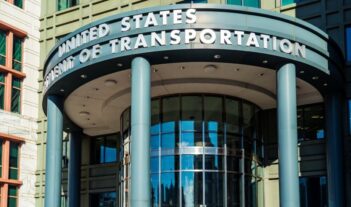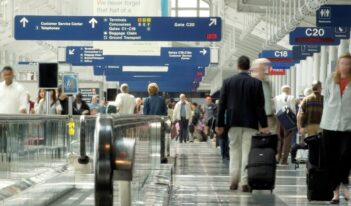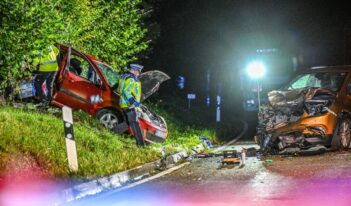
As the technology for automated cars develops, California regulators consider how best to approach this new challenge.
Autonomous vehicles are fast progressing from cars that can perform certain driving tasks, such as parallel parking, to cars that can execute entire trips without a driver. In light of these developments, California recently proposed regulations to permit the use of autonomous cars by the general public.
Truly unmanned cars are not yet available, but technology is rapidly moving toward that possibility. Tesla’s autopilot feature handles many complicated driving situations but requires that drivers keep a hand on the wheel most of the time. Some companies, such as Google, are testing cars which operate autonomously but are configured so that a driver can take over at a moment’s notice. Before companies deploy these cars for actual consumer use throughout the United States, states will need to develop regulations for their use on the roads.
Late last year, the California Department of Motor Vehicles (DMV) issued proposed regulations for deploying autonomous vehicles.
The proposed regulations stem from California’s 2012 law requiring the DMV to regulate autonomous vehicles on public roadways. California previously adopted some initial regulations governing the testing of autonomous vehicles that became effective in September 2014. Those initial regulations resulted in eleven companies, including Google, obtaining permits to test self-driving cars in California.
The recently proposed regulations would mandate that a driver be present in the autonomous vehicle at all times and “be capable of taking over immediate control of the vehicle in the event of an autonomous technology failure or other emergency.” The driver would have to have a special “autonomous vehicle” certification, proving completion of a behind-the-wheel training program run by the manufacturer. The driver would also be responsible for any traffic violations.
The proposed rules would require manufacturers of self-driving cars to apply for a permit prior to deployment. The application would designate both the area and conditions in which the vehicle is capable of operating in autonomous mode.
Before the state would approve an application, the regulations would require a manufacturer safety certificate indicating compliance with certain safety requirements, such as the car having “self-diagnostic capabilities that meet current industry best practices” and the ability to stop safely “when there is an autonomous technology failure and the operator does not or is unable to take manual control.” The manufacturer would also have to provide evidence of its financial ability to pay judgments in the event of an accident, such as through adequate insurance, self-insurance, or a surety bond. Additionally, the proposed rule would require an experienced “third-party testing organization” to test the vehicle independently to ensure its operability using an extensive battery of tests.
Under the proposed regulations, manufacturers would receive a provisional permit for the first three years. During that time period, consumers could lease autonomous vehicles only. Throughout the provisional period, manufacturers would have to submit monthly reports on the performance of the vehicles.
The vehicles would have to be equipped with an event data recorder which will store all sensor data for at least the last thirty seconds leading up to an accident. If an autonomous vehicle is involved in an accident, the manufacturer would be required to report the accident to the DMV within ten days. Manufacturers would also have to report all safety related defects.
Some commentators have criticized the proposed regulation’s requirement that all cars have a driver as stifling the development of truly autonomous vehicles. Even California’s Lieutenant Governor, Gavin Newsom, has said that the regulation “may prove too onerous, create road blocks to innovation, and may ultimately drive the development of this promising industry to other states.” However, others have supported California’s proposal as vital to ensure safety, given the current status of technology.
The disagreement over the proposed regulations was evident at recent workshops seeking input on the proposals. The leader of Google’s self-driving car project, Chris Urmson, reportedly warned regulators “to be careful about the assumption that having a person behind the wheel” is safer and stated that if the regulations were not amended Google would test its newest cars in Texas. Advocates for the blind were particularly outspoken about whether they would be able to use the new technology. On the other hand, consumer advocacy groups praised the cautious approach.
Google recently issued a report on its testing of self-driving cars on public roads in California, as required by California’s 2014 testing regulation. Its report includes a record of each time the autonomous technology disengaged because it could not drive safely and needed to hand over control to the driver. Google reported a significant decrease in the ratio of miles driven to disengagements, from 785 miles per disengagement in the last quarter of 2014 to 5318 miles in the last quarter of 2015. Thirteen of these incidents would have resulted in some type of accident without human intervention. Although Google recognizes that it must continue to hone the technology, it argues that autonomous cars could make our roads drastically safer as 94% of accidents in the U.S. involve human error.
These discussions follow the Obama Administration’s nearly $4 billion pledge to establish pilot programs to accelerate the development of autonomous cars. In conjunction with the White House’s recent budget proposal, the U.S. Department of Transportation (DOT) committed to developing regulations for autonomous automobiles. It also announced updates to the National Highway and Transportation Safety Administration’s 2013 policy on autonomous cars.
“We are on the cusp of a new era in automotive technology with enormous potential to save lives, reduce greenhouse gas emissions, and transform mobility for the American people,” said U.S. Secretary of Transportation Anthony Foxx.
The DOT has pledged to develop guidance for the safe operation of self-driving vehicles within six months by working with industry stakeholders. Secretary Foxx also discussed the importance of working with states like California to develop “a model state policy on automated vehicles that offers a path to consistent national policy.” Finally, Secretary Foxx encouraged manufacturers to dialogue with the DOT by requesting rule interpretations or exemptions as companies develop new innovations. The DOT’s announcement, unlike California’s proposed rule, included a focus on developing and regulating autonomous vehicles “designed without a human driver in mind.”



